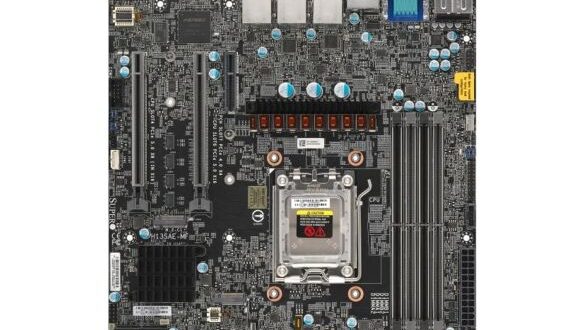The demand for faster computing solutions grows as technology advances. For users dealing with high-performance applications or complex workloads, a single CPU may not suffice. Dual CPU motherboards present a compelling alternative, allowing for the installation of two processors, thereby boosting computational power and efficiency. This guide provides an in-depth look at dual CPU motherboards, covering their features, benefits, and key considerations to help users choose the correct setup for their needs.
What is a Dual CPU Motherboard?
Definition and Basic Function
A dual CPU motherboard is a type of mainboard that supports two central processing units (CPUs). This configuration enables the system to handle more tasks simultaneously, significantly improving performance, especially in multi-threaded applications. Each CPU operates independently, sharing the workload and maximizing processing efficiency, which is particularly beneficial for intensive computational tasks.
Typical Uses
Dual CPU motherboards are commonly used in high-performance workstations and server environments. In workstations, they are ideal for applications that require substantial computing power, such as 3D rendering, video editing, and scientific simulations. In server settings, dual CPU systems can efficiently manage multiple concurrent tasks and users, making them suitable for database management, virtualization, and other enterprise-level applications.
Key Features of Dual CPU Motherboards
Increased Processing Power
The primary advantage of dual CPU motherboards is their ability to provide enhanced processing power. With two processors, these systems can execute multiple threads simultaneously, leading to faster data processing and improved multitasking capabilities. This setup is particularly advantageous in scenarios where high-performance computing is paramount, such as in data centers, research labs, and creative industries.
Enhanced Memory Capabilities
Dual CPU motherboards typically support larger amounts of RAM compared to single CPU boards. This feature is crucial for memory-intensive applications, allowing for more extensive datasets to be processed efficiently. Additionally, these motherboards often include multiple memory channels, which can further enhance data throughput and system performance.
Advanced Cooling Solutions
Given the increased heat output from two processors, dual CPU systems require advanced cooling solutions. Effective cooling is vital to maintain optimal operating temperatures and prevent thermal throttling, which can degrade performance. Common cooling options include enhanced air cooling systems, liquid cooling, and custom cooling loops, which ensure stable and efficient operation even under heavy workloads.
Benefits of Using a Dual CPU Motherboard
Performance Enhancement
The performance benefits of dual CPU systems are evident in their ability to handle complex, parallel workloads more efficiently. This capability is particularly valuable in environments that demand high computational power, such as scientific research, financial modeling, and large-scale data analysis. By distributing the workload across two CPUs, these systems can achieve faster processing times and improved overall efficiency.
Scalability
Dual CPU motherboards offer significant scalability, making them a long-term investment for users who anticipate growing computational needs. They provide ample room for future upgrades, including additional RAM and storage, which can help extend the system’s lifecycle. Additionally, these systems can distribute workloads more effectively, balancing the processing demands and enhancing system responsiveness.
Considerations When Choosing a Dual CPU Motherboard
Compatibility
Compatibility is a necessary consideration when determining a dual CPU motherboard. Users must ensure that the motherboard supports the specific CPUs they intend to use, including matching socket types and chipset compatibility. Additionally, the physical size of the motherboard should be compatible with the chosen case, and adequate space must be available for cooling solutions.
Cost and Budget
While dual CPU motherboards offer significant advantages, they typically come at a higher cost than single CPU boards. Prospective buyers should consider both the initial investment and ongoing costs, such as power consumption and cooling requirements. It’s essential to balance the desire for high-end features with budget constraints, ensuring that the chosen system meets both current and future needs without unnecessary expense.
Purpose and Use Case
Not all users will benefit from a dual CPU motherboard, making it essential to assess specific needs before purchasing. These systems are most beneficial in professional and enterprise settings where high-performance computing is a necessity. Users should evaluate whether their workload justifies the investment, particularly if the system will be used for specialized applications like data analysis, scientific computing, or multimedia production.
Installation and Configuration Tips
Installation Process
Installing a dual CPU motherboard requires careful handling and attention to detail. Users should ensure that they are grounded to prevent static discharge and handle the motherboard by its edges. The board should be securely placed in the case, with adequate clearance for cooling components. After installation, BIOS/UEFI settings may need adjustment to optimize performance, including enabling features that support multi-CPU operations.
Driver and Software Configuration
Proper driver installation is crucial for ensuring that the system functions correctly. Users should download the latest drivers from the motherboard manufacturer’s website and follow the installation instructions carefully. Additionally, software applications may need configuration to fully utilize the dual CPU setup, such as enabling parallel processing features or optimizing memory usage.
Common Pitfalls and Mistakes to Avoid
Ignoring Cooling Needs:
One of the most common mistakes when setting up a dual CPU system is underestimating the cooling requirements. Effective cooling is indispensable to prevent overheating, which can lead to system fluctuation and reduced lifespan of components. Users should invest in high-quality cooling solutions that match the system’s heat output.
Overlooking Power Supply Requirements
Dual CPU systems typically require more power than single CPU setups, making it crucial to choose a robust power supply unit (PSU). The PSU should provide sufficient wattage to support all components, including CPUs, GPUs, and additional peripherals. It’s also advisable to select a PSU with a good efficiency rating to minimize energy consumption and heat generation.
Underutilizing Dual CPUs
To fully benefit from a dual CPU setup, users must ensure that their software can leverage the additional processing power. This includes using applications optimized for multi-threading and parallel processing. Failure to do so can result in underutilization of the system’s capabilities, negating the advantages of having two CPUs.
In the Final Analysis
Dual CPU motherboards provide significant benefits in terms of processing power, scalability, and system efficiency. However, choosing and configuring such a system requires careful consideration of compatibility, cost, and specific use cases. By understanding these factors, users can make informed decisions that maximize the benefits of a dual CPU setup.
check out: https://vaytienlaisuatthap.xyz/
 Personal Finance and Attractive Interest Rates Unlock Smart Savings with Low Rates and Expert Financial Tips
Personal Finance and Attractive Interest Rates Unlock Smart Savings with Low Rates and Expert Financial Tips







